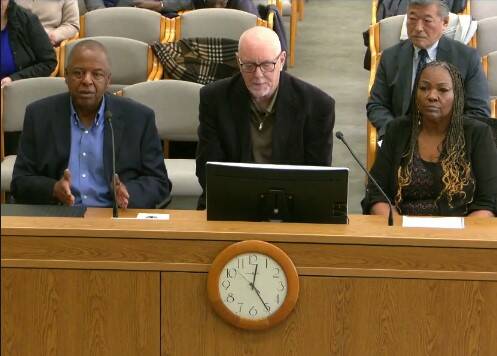The Tacoma Trauma Trust, a unique partnership between St. Joseph Medical Center, MultiCare Tacoma General Hospital and Madigan Army Medical Center celebrated its 10th anniversary on June 21.
According to officials, the trauma centers at Tacoma General and St. Joseph have served more than 13,746 individuals suffering traumatic and often life-threatening injuries from automobile accidents, gunshots, assaults, falls and other mishaps. The Trust provides expert trauma care 24 hours a day in Pierce County and the South Puget Sound region.
The Tacoma Trauma Trust began in 2000 following a five-year period when St. Joseph and Tacoma General did not provide trauma services. The creation of the Trust brought those advanced services back to the private hospitals in Pierce County. The Trust allows Tacoma General and St. Joseph to share trauma services with an every-other-day rotation. The two hospitals handle the vast majority of civilian patients who suffer traumatic injuries. Madigan Army Medical Center is on trauma duty around the clock to serve military personnel and, as needed, to accept and medically stabilize injured civilians before transferring to either St. Joseph or Tacoma General.
The trauma centers at St. Joseph, Tacoma General and Madigan are designated as Level 2 programs by the Washington State Department of Health. The only other Level 2 trauma centers in the state are in Spokane and Vancouver. The Level 2 designation shared by Tacoma General and St. Joseph means each hospital has a trauma surgeon on site when the facility is on trauma duty, and that orthopedists, anesthesiologists, neurosurgeons and other medical specialists can respond within 20 minutes of being called.
The state’s only Level 1 (the highest category) trauma facility is at Harborview Medical Center in Seattle.
Until the Tacoma Trauma Center program was established a decade ago, seriously injured patients were automatically transported by helicopter or ambulance to Harborview, often far from home and family.
Today, Tacomas trauma program provides complete care for nearly every penetrating and blunt traumatic injury. In 2009, only three percent of the patients were transferred to Harborview, down from 6 percent in 2005. Most often, those transferred suffered severe burns that required wound care by specialists available only at Harborview.
As the number of patients transferred out of the trauma centers at St. Joseph and Tacoma General has declined, the number of patients transferred in from other hospitals as far away as Bremerton and Olympia has increased — totaling 267 in 2009, up from 111 four years earlier.
Additionally, St. Joseph and Tacoma General provide outpatient care and referrals to specialists for civilian trauma patients after they are released from the hospital.
The trauma-care partnership between Tacoma General, St. Joseph and Madigan is unique in Washington State and most of the nation because it pairs civilian hospitals with a military facility. Madigan is also recognized as top military training facility for trauma medicine. Key funding sources for the Tacoma trauma system include the U.S. Department of Defense, Tacoma General (MultiCare Health System), St. Joseph Medical Center (Franciscan Health System), and the Washington State Department of Health.
“The success of Tacomas trauma service reflects the commitment by competing and diverse organizations to work together for the benefit of the entire community,” said Victoria Silas, MD, chair of the Tacoma Trauma Trust Board of Directors that oversees the trauma collaborative. “Our local trauma services are essential to the regions health care safety net.”





